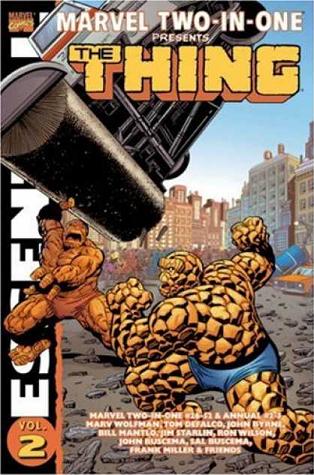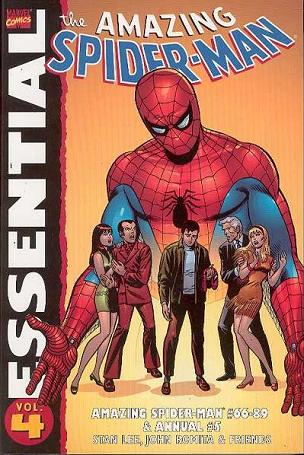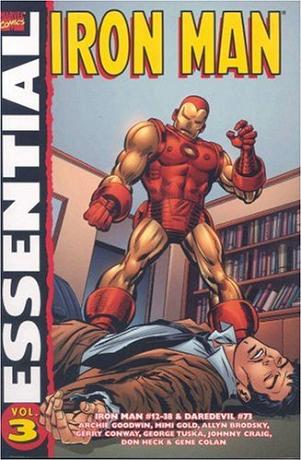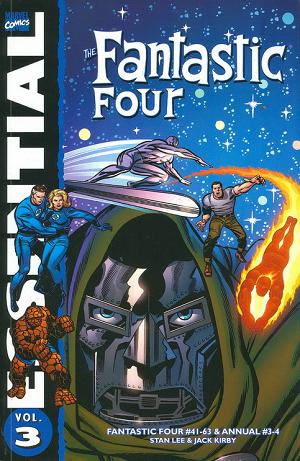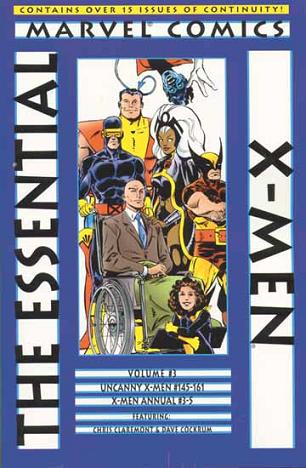
Essential X-Men Vol. 3
Chris Claremont, Dave Cockrum and friends
Reprints: Uncanny X-Men #145-161, Annual #3-5 (May 1981 – September 1982)
Get this for: more cosmic adventures with the X-Men — four stars
What a difference an artist makes. Was the previous volume of Essential X-Men all about John Byrne, in this volume Dave Cockrum is back and the X-Men change with him. Chris Claremont may have been the driving force behind The Uncanny X-Men for seventeen years, but he always adapts to his artists. With Byrne the stories were much more “realistic”, if that’s the right word to use about a series featuring mutant superheroes battling villains for the fate of the Earth or the Universe. As Cockrum comes aboard, the stories become more swashbuckling, less restrained and also somewhat less grim. Though to be honest, the X-Men still have difficulty winning their fights.
Claremont eases up a bit on the interconnectness of the stories in this volume, though various subplots do keep popping up from time to time. The most persistent of this is of course the whole issue of mutant prejudice, the reason why the X-Men existed in the first place. It’s far less in the foreground than under Byrne however. Apart from the X-Men’s climatic fight with Magneto leading up to issue 150, prejudice against mutants is kept in the background. With Cockrum back, the X-men fight menaces such as Doctor Doom and Arcade (#145-147), the mutant Caliban (148), Magneto (149-150), the Hellfire Club (151-152), Rogue (158), Dracula (159) and Belasco (160), the last two stories featuring artwork by Bill Sienkiewicz and Brent Anderson respectively. And of course, if Cockrum is back, the Shi’ar and the Starjammers can’t be far behind and indeed they feature in issues 154 to 157, with consequences lasting much longer.
Now the usual cliche about the X-Men under Claremont has always been about “heroes fighting to save a world that loathes and hates them for being mutants”, about fighting to prevent the future glimpsed in “Days of Future Past”. It all fits nicely with the original reason for the X-Men, of showing normal humans that mutants could be trusted and you wouldn’t think intergalactic space opera fits in with this and yet here we are again. There’s a plot against Lilandra, empress of the galaxy spanning Shi’ar empire and of course professor Xavier’s lover and Corsair of the Starjammers (Cyclops’ dad) comes to Earth looking for help, followed by a nasty new enemy: the Brood. They’re helped by an old Ms Marvel villain, Deathbird, also revealed to be of Sh’iar royal blood. It takes the X-Men three issues to defeat Deathbird and her co-conspirators, though they will be back in the last issue collected here, which is the leadin to the Brood Saga proper.
It’s not just space opera that the X-Men can be adapted to, as the two issues with Dracula and Belasco show, again feature enemies with no connection whatsoever with the supposed theme of Uncanny X-Men. The latter story however does showcase several of Claremont’s traits, to with his use of foreshadowing and his inability to let the X-Men properly win their fights. In the story Belasco kidnaps Illyana, Colossus kid sister, from the strange island in the Bermuda Triangle the X-Men now had made their headquarters. The X-Men go to her rescue and end up in Limbo, where they come across gruesome reminders of what might be their future: a Wolverine skeleton, a corrupt Nightcrawler in service to Belasco, an older Collossus who died impaled in Belasco’s palace. They manage to fight and win back Illyana, but when Kitty Pryude pulls her out, she lets go for a second and when she reaches her again, she has aged seven years — to find out what happened, you had to have read the Magik miniseries that Claremont would write later.
The X-Men then win the fight against Belasco, but he still has the last laught. Equally undecisive are their battles with Doom and Arcade as well as the Hellfire Club. They may be defeated, but are left alone to make more trouble later on. This is much more so the case than with any other superhero title, each of which has to strike a fine balance between giving villains their just desserts and leaving enough of them around to provide future menace. In the X-Men’s case it at times seems as if they’re never allowed to win their battles outright, always end up having to pay the price. It’s one of the things about Uncanny X-Men that would become incredibly frustrating to me over time, though here it has not reached that point yet…
Essential X-Men Vol. 3 ends with three annuals, slightly different stories with different artists, the first one featuring George Perez even. Each stands alone and offers some welcome change of pace for the X-Men. They round off the volume nicely.
